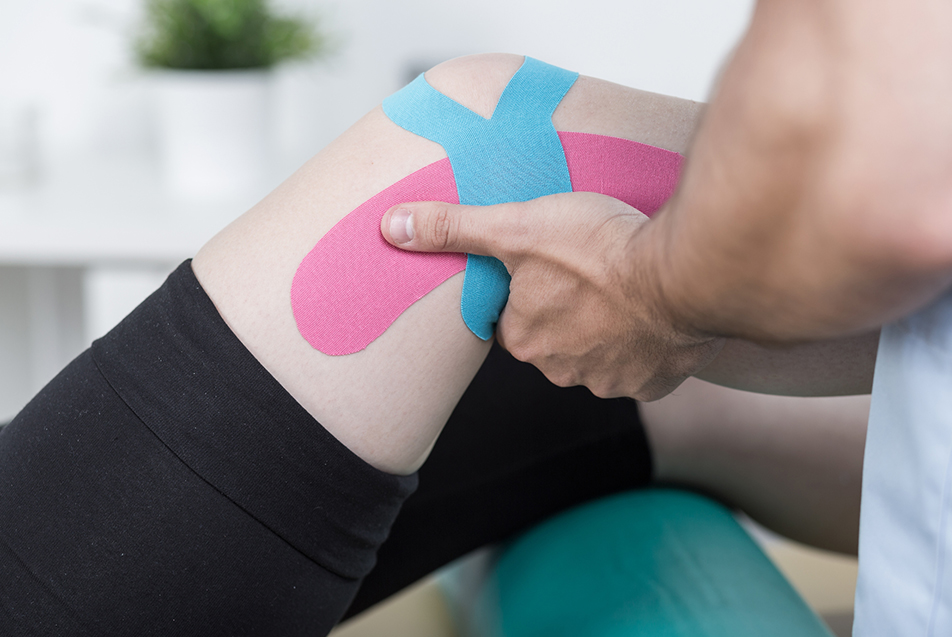
Starting with its big debut on the shoulders of Olympic athlete Michael Phelps, kinesiology tape has piqued the interest of athletes, coaches and healthcare professionals at all levels. Unfortunately, the rise in popularity doesn’t always include curiosity about the research and proper applications of the product. Whitney Fink, MS, LAT, ATC, athletic trainer, Parkview Sports Medicine, has some important pointers for those looking for some additional support.
Athletes and coaches have resorted to kinesiology tape, in some instances, as a cure-all for acute and chronic injuries without being well-informed about what it is actually doing. While kinesiology tape is not, in fact, a cure-all, and is typically only beneficial when paired with other means of conventional treatment, it does have some basic functions that can be very beneficial to an injured athlete.
Proprioception, circulation and nerve conduction
Kinesiology tape has a very unique adhesive quality that separates it from other athletic tapes. This special stick allows it to lift the skin in specific ways, supporting specific scientific processes in the area of injury. Generally, by lifting the skin in the area of application, it is granting the body more space to bring in healing properties or push out swelling via circulation, opening up the area for better nerve conduction, and providing pain relief through proprioceptive processes. In short, each of these functions encourage quicker healing and better functionality of the injured body part.
Fact: Contrary to popular belief, while the functions listed above are very beneficial to an injured athlete, kinesiology tape does not serve as a means of support or strength.
Application
With each body part and injury, comes a unique way in which kinesiology tape should be applied. Different applications call for different tension pulls, shapes, ways to cut the tape, and positions of the body while applying. A trained professional should be the only individuals attempting to apply kinesiology tape in order to ensure an effective means of treatment.



